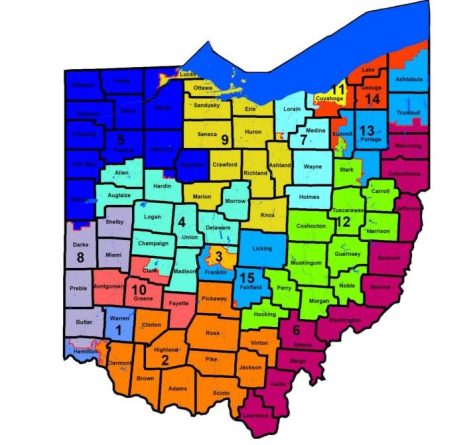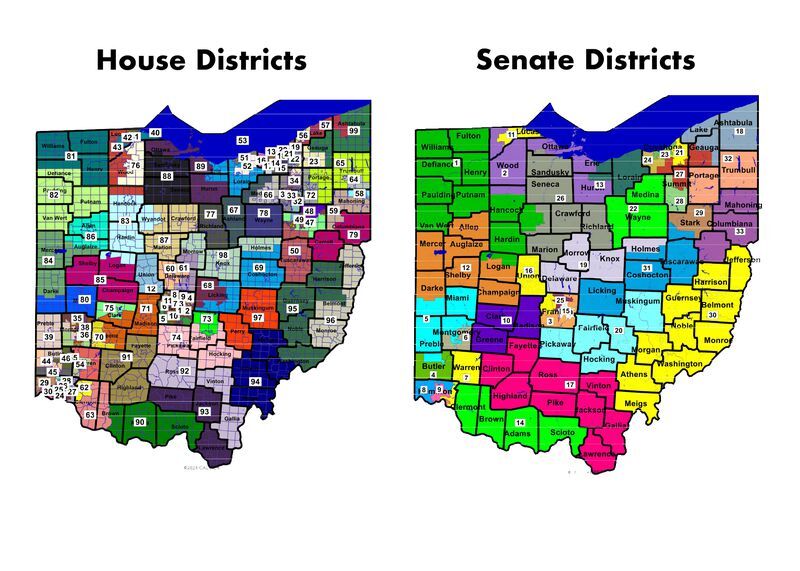Back to the drawing board: Ohio legislative maps still undecided
Courtesy of the Ohio House of Representatives
Republicans propose new state legislative maps after long debate on Jan. 22, 2022.
February 1, 2022
New state legislative district maps await the Ohio Supreme Court approval as election deadlines draw near.
After the Supreme Court decided the previously submitted maps were unconstitutional, the Ohio Redistricting Commission had to submit new maps that would follow set guidelines by Jan. 22.
The process originally started in 2021 after the publication of the 2020 census. Ohio was required to submit legislative maps to the courts to account for changes in the state population, and if both parties accepted, the maps would be in effect for the next 10 years.
However, the Ohio Supreme Court ruled the previously proposed maps by the Republican majority unconstitutional because they unfairly favored the majority party and went against constitutional guidelines approved by voters in 2015.
The Ohio Redistricting Commission voted to approve Republicans’ proposal just hours before the deadline arrived at midnight on Jan. 22. After failing to achieve bipartisan approval, the maps will be in effect for only four years.
While the commission submitted the second round of maps Jan. 22, Democrats and voter groups said that many of the original issues remain.
Objections to the maps had to be filed by Jan. 25, just mere days after they were finalized. This quick turnaround left little time for public input.
“They silenced Ohioans by refusing to allow public input on the maps they eventually adopted,” a House Democratic staffer said.
The organizations who originally filed against the 2021 maps filed again because they felt the maps showed no improvement.
“The current electoral maps of Ohio do not accurately represent the voters that live in these districts,” a House Democratic staffer said. “Voters have been packed together and cracked apart in order to dilute their political power.”

Gerrymandering is a political practice that manipulates legislative districts to favor political parties or affect minority voters by hindering voters’ ability to have a fair voice in elections.
The concept of gerrymandering is not new to Ohio since it is one of the top ten most gerrymandered states in the country. The League of Women Voters of Kent have been one of the many voter leagues to fight against gerrymandering.
“When we’re gerrymandered like we are now, our politicians pick us, we don’t pick them.” said Deborah Barber, president of the League of Women Voters of Kent.
The Republicans argued their side saying the maps met the state constitution’s requirements to be fair, as reported in a New York Times article.
The tight deadline not only makes it difficult for public opinion to be heard, but it also puts local elections in jeopardy.
Candidates seeking party nominations within state legislative offices must file by Feb. 2 and with district lines undetermined, candidates might not be able to file properly.
With no official deadline on the ruling for the newly submitted maps, Ohioans are left with uncertainty as election deadlines near.
Madeleine Majikas is a Reporter. Contact her at [email protected].

























